The best bone conduction headphones 2025: Stay aware on the road, in the pool, and in the office
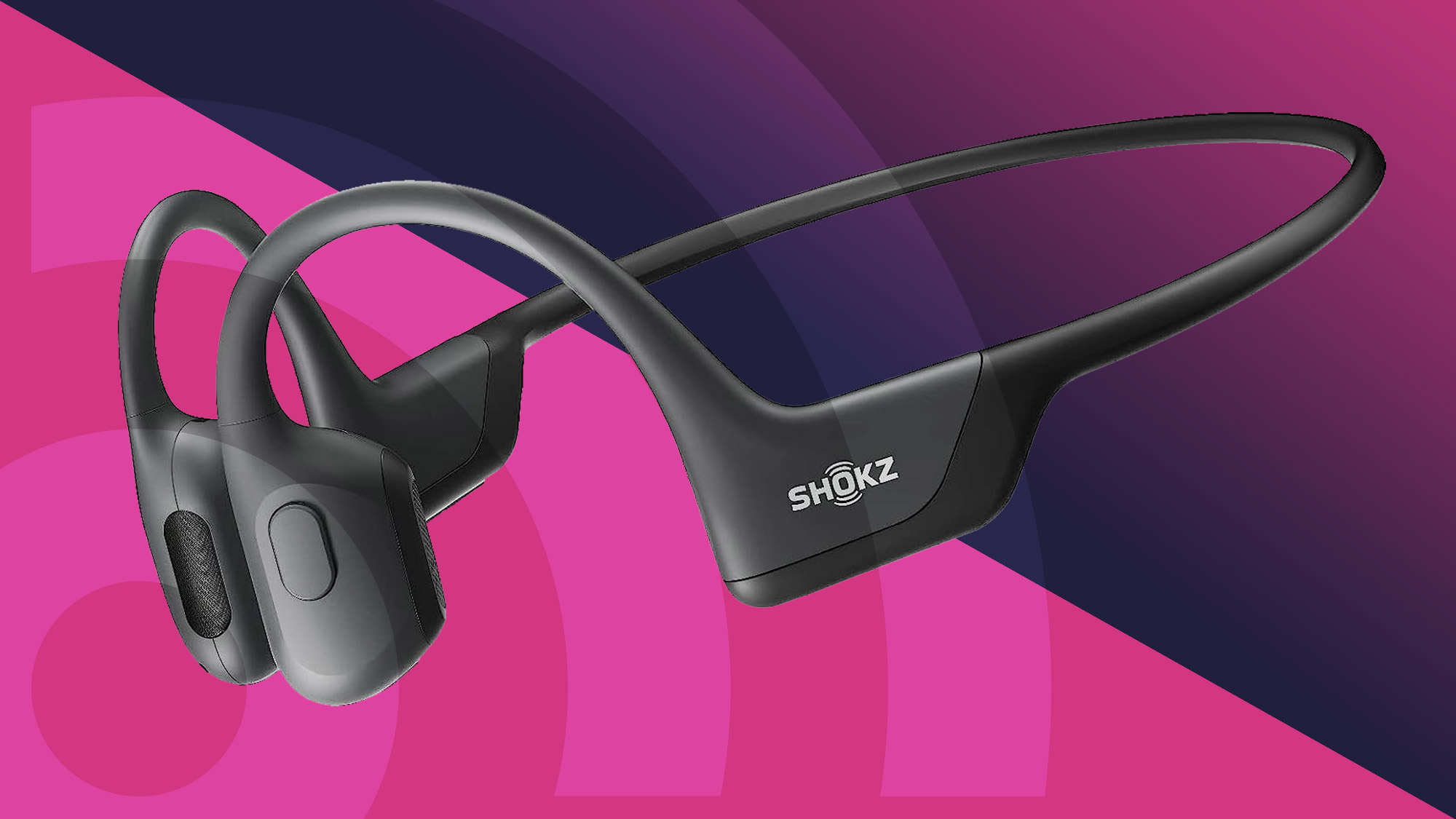
The best bone conduction headphones are perfect for staying aware of your surroundings and still listening to your favorite tunes, a podcast, or perhaps even a conference call.
Bone conduction is a specific kind of technology that differs from other open-ear headphones. Bone conduction headsets beam sound through the bones in your skull via transducers, rather than vibrating the air with soundwaves.
These headsets are most useful during workouts, and can be instrumental in keeping you safe when you're running or cycling in busy environments. Being able to hear traffic noise while you're cycling, or other runners around you during a race event, has been a real game-changer for me, and many organized race events now only allow bone conduction or open-ear earphones.
However, bone conduction headphones are also useful for the office, helping you stay aware of conversations outside of the music or virtual meeting you're listening to.
Below I'll take you through the pros and cons of the six best headsets we've tested in 2025, to help you decide which one is right for you. If you can't find what you're looking for here, check out our best swimming headphones and best open-ear headphones guides for more headphones designed for spatial awareness.

Matt is TechRadar's Senior Fitness and Wearables Editor which means he's an expert on workouts, sports headphones, and all things fitness tech. Matt's spent years covering the health and fitness beat, tested many of the headphones below, and has commissioned a small team of writers to help curate this guide.
The quick list
If you don’t have time to read our full list of the best bone conduction headphones, you can read the round-up below for a shortcut to the top options for your needs and budget.
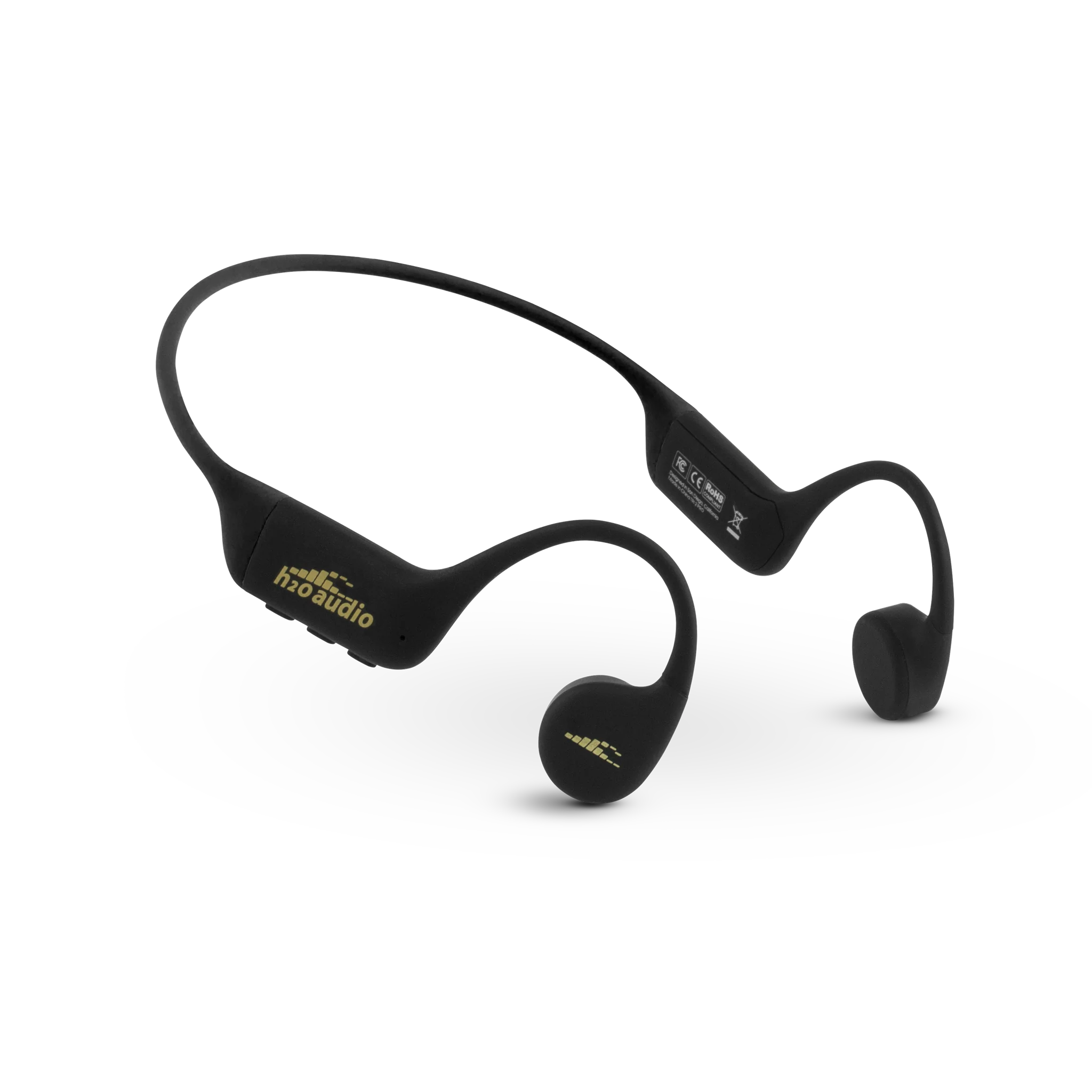
Best overall
The feature-rich H2O Audio Tri 2 Pro Multi-Sport comes with Bluetooth, a save-your-playlist feature, and built-in storage, giving you plenty of options for streaming your tunes. The sound is rich, but it's pricey.
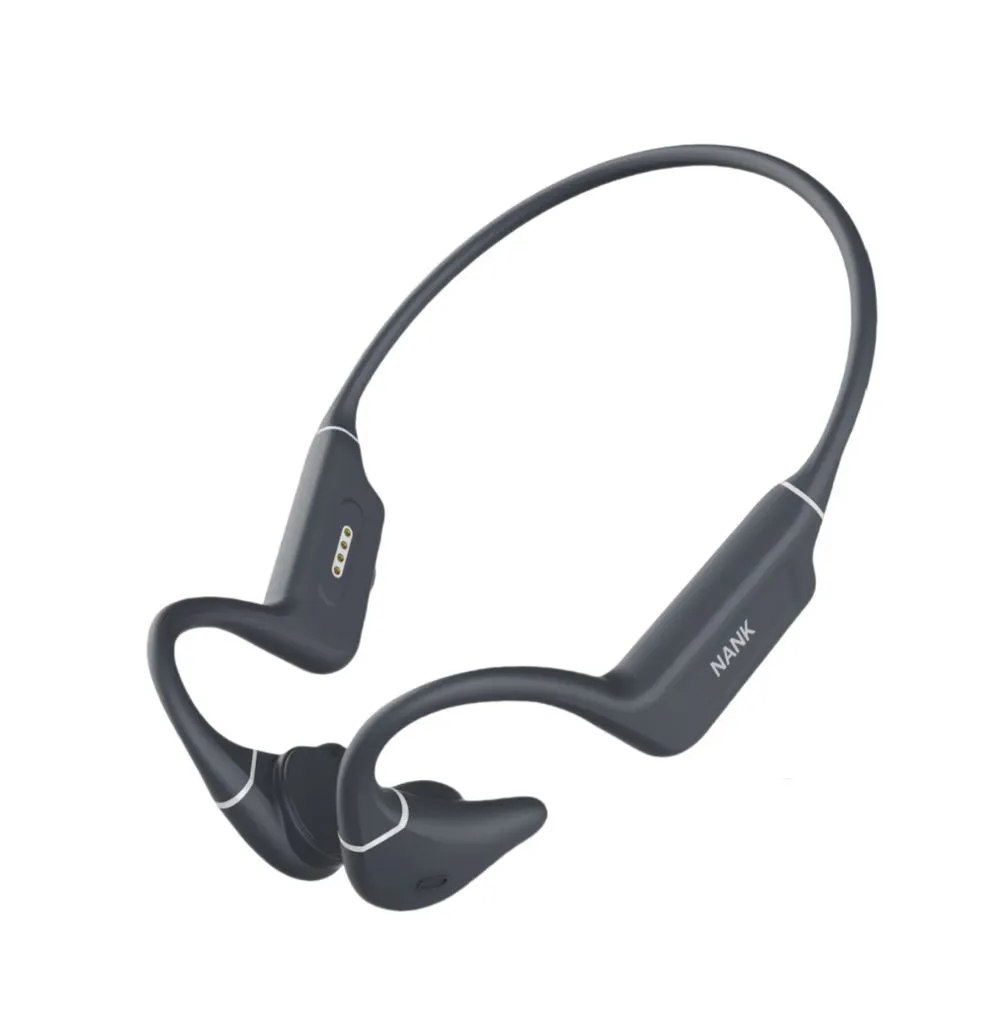
Best premium
With brilliant features and a price tag to match, the Nank Runner Diver2 Pro is my top premium pick thanks to outstanding performance both in and out of the water.

Best budget
The new Shokz OpenRun Pro 2 might be excellent for running, but when it comes to budget bone conduction headphones, your options are slim. The Shokz OpenRun are reasonably priced and still excellent in 2025.

Best for battery life
The Suunto Wing may only have a four-hour battery life, but it comes with a charging dock which offers a further three hours with just 10 minutes of contact time.
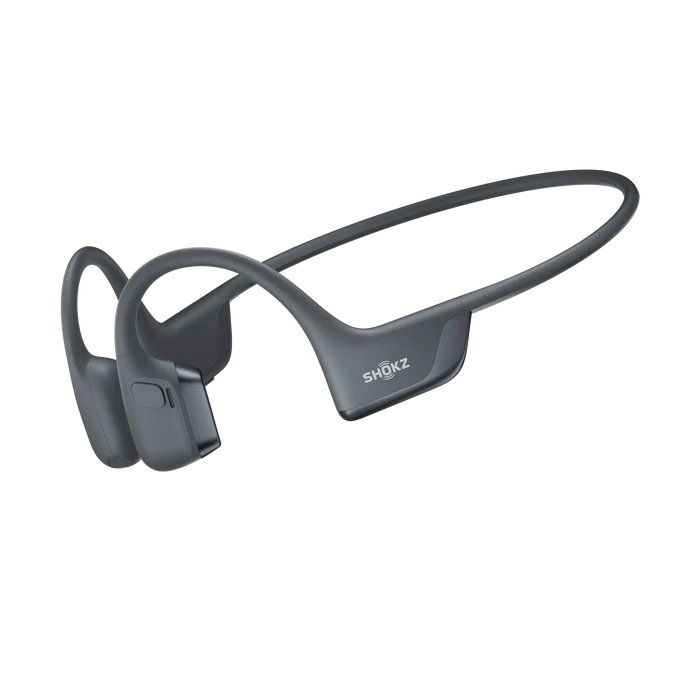
Best for running
The new Shokz OpenRun Pro 2 is my top pick for running in 2025, building on the excellent formula of its forebears. You'll get great audio, a comfortable fit, and 12 hours of battery life.
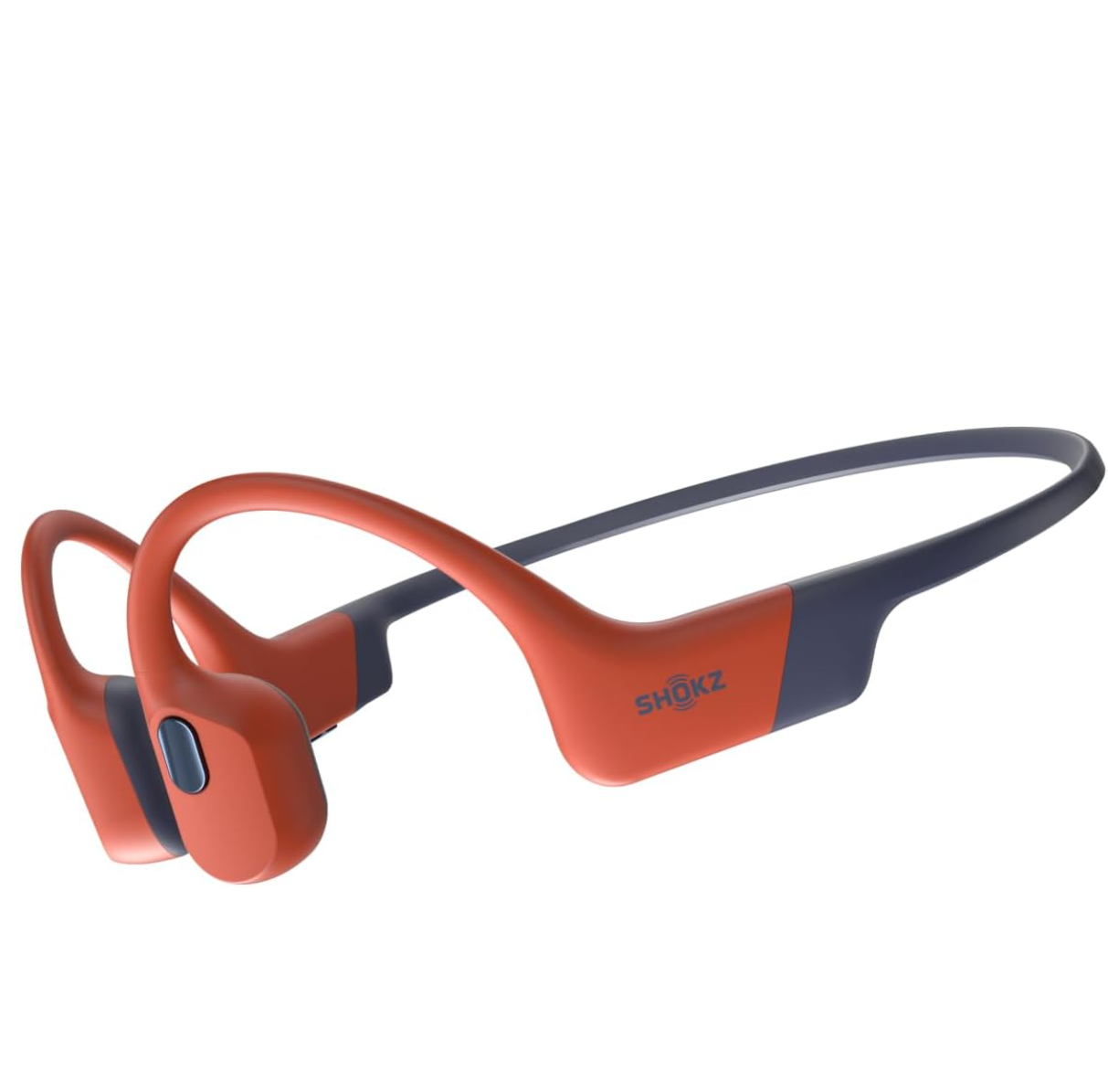
Best for swimming
The Shokz OpenSwim Pro feature onboard storage for MP3 playback of up to 8,000 songs. They're waterproof and can be used for swimming as well as exercise on land. Their elite design and comfortable fit make them our top premium pick.
The best bone conduction headphones in 2025
Why you can trust TechRadar
Below you'll find full write-ups for each of the best bone conduction headphones in our list. We've tested each one extensively, so you can be sure that our recommendations can be trusted.
The best bone conduction headphones overall
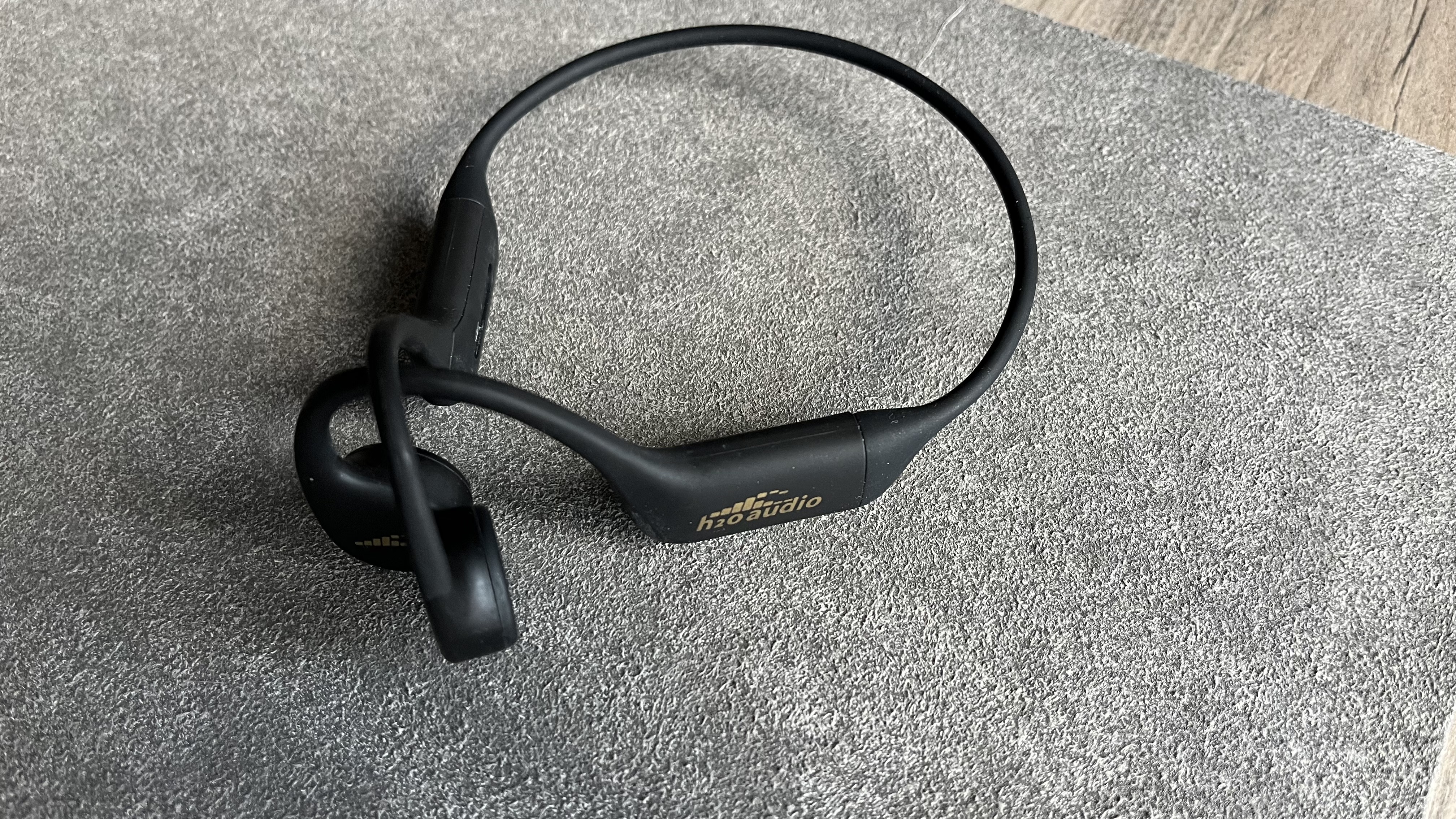
Specifications
Reasons to buy
Reasons to avoid
✅ You're a triathlete: The H20 Tri 2 Pro packs features transitioning seamlessly from water to land.
✅ You want to stream music: The Playlist+ functionality works with streaming services like Spotify, so you can download music to play in the water.
✅ Money's no object: These bone conduction headphones are expensive, but they are the best around.
❌ You own all your own music: If you don't want to save your playlists from streaming services and you have a large digital library, you can save some money.
❌ You don't swim often: If you just want to hook a pair of Bluetooth headphones to your phone or watch, do yourself a favor and buy a pair of OpenRuns.
The H2O Audio Tri 2 Pro Multi-Sport bone conduction headphones may be among the pricier options on our list, but they're certainly more feature-rich than the others. They're a triathlete's dream, seamlessly transitioning from water to land for rich listening in any environment.
Best for swimming as well as for land-based workouts, they come with an MP3 player that stores 8GB worth of music and a save-your-playlist Playlist+ functionality to work with streaming, which means that you don't have to rely on Bluetooth connectivity when you're in the water. As a habitual Spotify user, this is so useful for me. Outside of the water, however, you still have that Bluetooth connectivity so you can stream any music or podcast you like.
During testing, they've also proven to be great for listening in general. Worn above water, both music and podcasts boast solid sound, regardless of whether you're using Bluetooth or internal storage. Underwater, podcasts’ sound quality was just as good.
They're quite expensive, but that doesn't take away from the fact that these are the best bone conduction headphones on the market right now. Sorry, Shokz.
Read our full H2O Audio Tri 2 Pro Multi-Sport review
The best premium bone conduction headphones
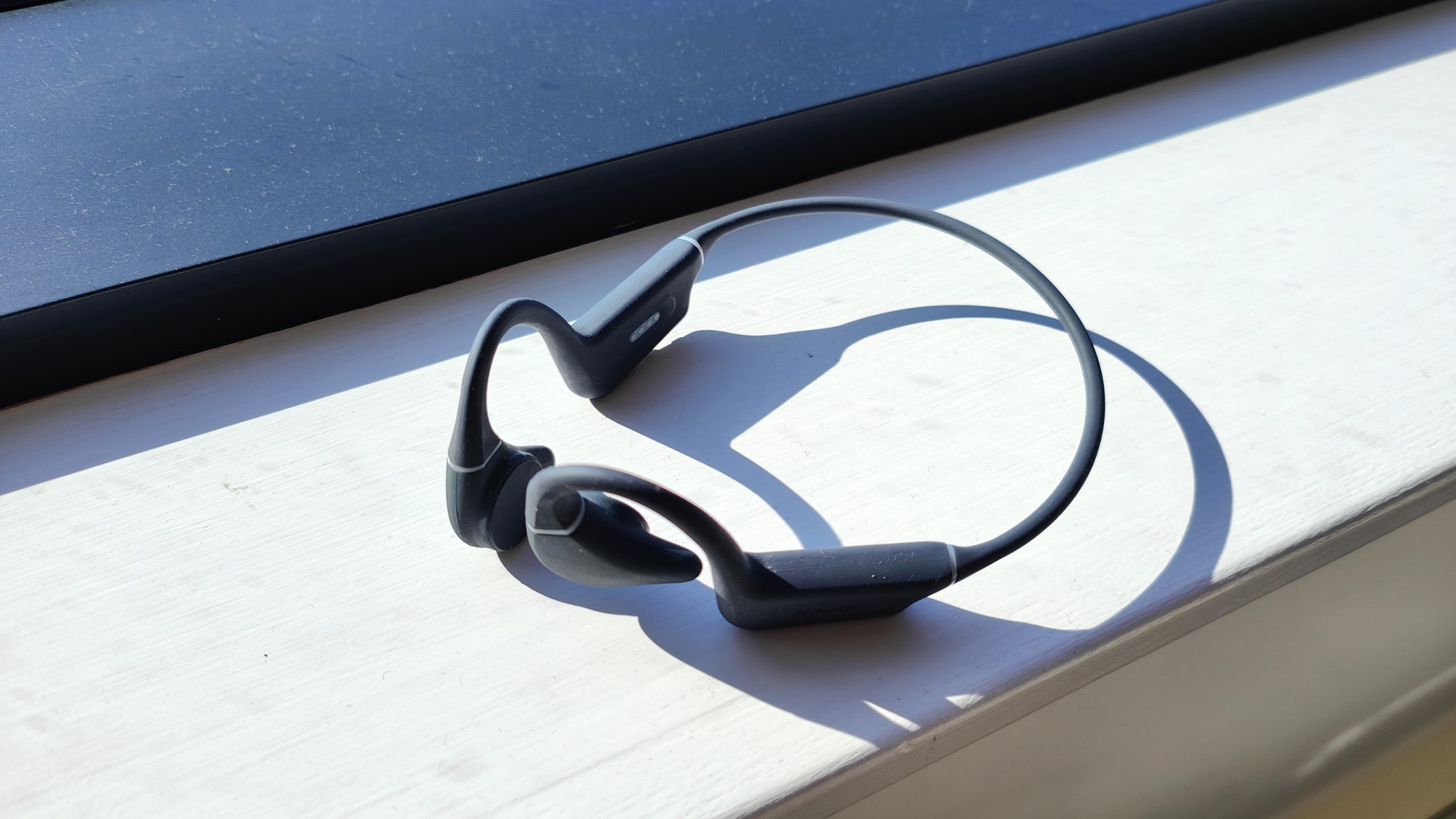
Specifications
Reasons to buy
Reasons to avoid
✅ You want adjustable sound quality: The Nank offers some customisation with multiple earplugs and pliable arms to provide better fits and sound.
✅ You want to connect multiple devices: Multipoint connectivity is really great for transitioning between phone and laptop.
✅ You have a ton of songs: 32GB is a wild amount of storage, honestly.
❌ You're on a budget: These are just as expensive as the H20 Tri 2 Pro.
❌ You don't have a big music library: Sacrificed owning all your music to streaming services? You'll have nothing to load these with.
The Nank Runner Diver2 Pro are exceptional bone conduction headphones for both runners and swimmers alike. They excel in every field and even come with premium earplugs to improve the sound quality you get.
Onboard storage of 32GB takes care of music, and an IP69 water rating ensures you can use them while swimming, not just in the rain.
I love their lightweight and comfortable fit, as well as the well-designed charger, although USB-C is a surprising omission. The noise-cancelling mode is decent, and there's multipoint connectivity to ensure reliability.
I enjoyed the clear, nicely balanced sound during testing, and the battery life definitely delivers the promised 10 hours. These are my top money-no-object bone conduction pick, making them a perfect candidate for a premium slot.
Read our full Nank Runner Diver2 Pro review
The best cheap bone conduction headphones
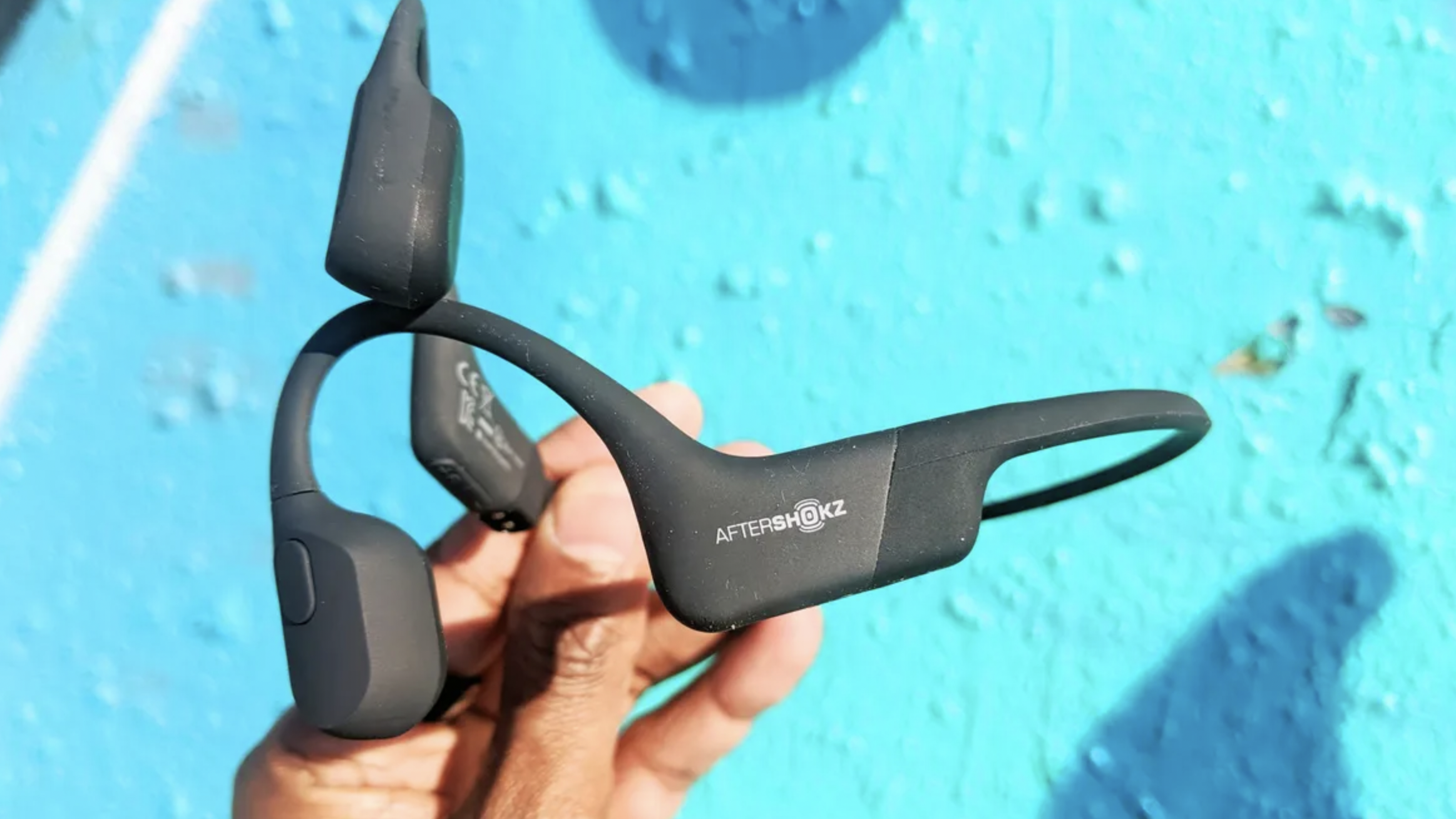
Specifications
Reasons to buy
Reasons to avoid
✅ You're on a budget: They're still not cheap, but these regular Shokz OpenRun can frequently be found discounted further.
✅ You're only intending on running: If you don't fancy swimming with headphones, there's no point paying extra for built-in storage and waterproofing.
❌ You want storage: The Shoks OpenRun base headphones can't store your own music, only stream via Bluetooth.
❌ You're a swimmer: They're great on the road, but sadly won't survive the pool.
While the original Shokz OpenRun have hardly changed in years, they're still the gold standard when it comes to affordable bone conduction technology. Cheaper than the OpenSwim Pro and OpenRun Pro 2, the old OpenRuns boast eight-hour battery life and a higher waterproof rate than the newer OpenRun Pro 2, so no need to worry about downpours during runs.
They were a staple of my runs for years before I replaced them with the Nanks above, and for good reason: incredibly light, they sound great and they're great value, especially during deals season.
During testing, our reviewer praised Shokz PremiumPitch 2.0 transducers, and they still hold up today, although the sound can't compare to our premium picks. These are also Bluetooth-only, so no storage.
Read our full Shokz OpenRun review
The best bone conduction headphones for battery life

4. Suunto Wing
Our expert review:
Specifications
Reasons to buy
Reasons to avoid
✅ You train while traveling: The addition of the portable charging case is extremely useful for frequent travelers, who might run in different cities.
✅ You're a multi-day trail athlete: Run or cycle for four hours, charge the Wing for 10 minutes, and go for another three hours!
❌ You're running marathons or single-day ultras: That four hours initial battery life might be a problem if you're not planning on stopping to charge those headphones.
❌ You're planning on swimming: Again, these aren't waterproof, merely water-resistant, so won't handle submersion.
Suunto Wing is the only set of bone conduction headphones on this list with a portable charging dock, which allows you to charge the headset on the move. That means while the Wing headset itself only has four hours of battery life, just ten minutes of contact with the dock extend the battery by a further three hours, offering the user a total of 30 hours before the dock has to be recharged.
It's a nifty system, and if you're using the Wing for runs and rides, you're unlikely to be working out for longer than four hours at a time (and even if you are, you can pack the dock in a slender running or cycling backpack along with your energy gels and CamelBak). It allows for you to use the Wing headphones even across multi-day trail events when charges are few and far between.
Otherwise, the Wing is well-constructed, via a combination of titanium and silicone, with a three-button control array and IP67 waterproof rating. While not fully swimproof, they're theoretically able to handle "short periods of submersion" and more than capable of being worn in heavy rain. The only downside is a relatively high price point compared to some of the older Shokz on the list.
Read our full Suunto Wing review
The best bone conduction headphones for running
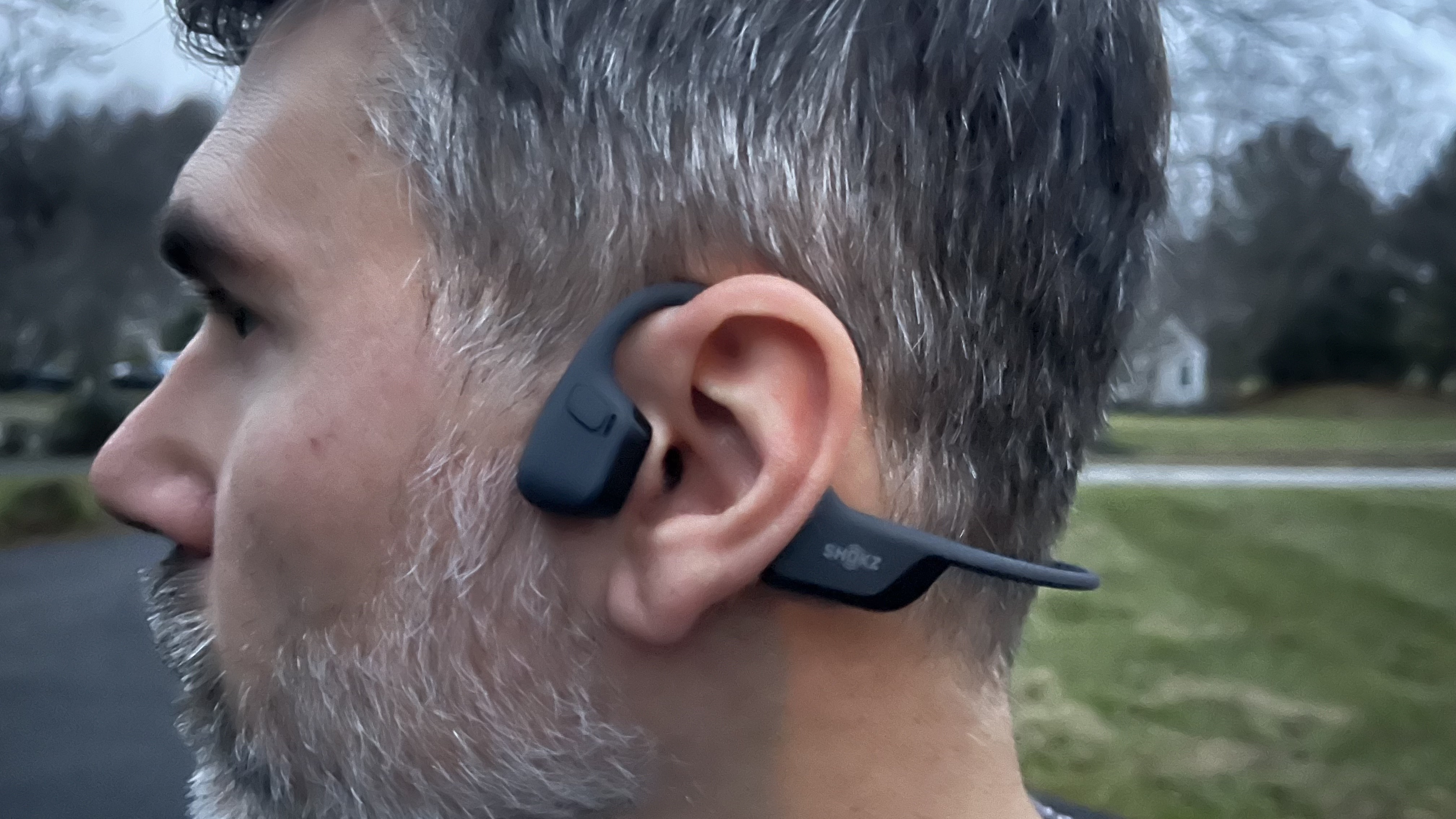
Specifications
Reasons to buy
Reasons to avoid
✅ You run long distances: The boosted 12 hours of battery life ensures all-day wear is possible, whether you're on a long trail or training multiple times a day.
✅ You want good sound: Satisfying bass, full mid-range sound and EQ options ensure a quality listening experience, even with your ears free.
✅ You're a last-minute planner: Fast charging ensures you can plug them in for just five minutes and run for over two hours.
❌ You're a casual jogger: It's likely you don't need the full weight of all the features if you just want a soundtrack for a 5K round your local park.
❌ You want amphibious headphones: These aren't pool-safe, so you're better off with the Tri 2 Pro or Nank Runner Diver headphones above if you want headphones fit for swimming and running.
My new top pick for running in 2025 is the Shokz OpenRun Pro 2. Building on the success of the OpenRun Pro, Shokz has upgraded the audio with its new 10th-generation bone conduction tech. It has also added air conduction to complement the bone conduction vibrations. In testing, our reviewer found satisfying high-end performance, full mids, and a slightly pulled-back bass profile.
For bone conduction headphones they sound excellent, however. Audio aside, a new USB-C connector ensures a faster charge, you'll get two-and-a-half hours of listening from just five minutes, and a full charge takes just one hour. That full charge is good for 12 hours of total listening time, too.
There are six total audio modes and a five-band EQ for personalization. You can also store MP3 tracks onboard thanks to 8GB of storage and a special feature for recording playlists without your phone present.
While these won't work for swimming, they're IP55-rated, so boast solid water resistance. These are absolutely the top bone conduction headphones for running in 2025.
Read our full Shokz OpenRun Pro 2 review
The best bone conduction headphones for swimming

6. Shokz OpenSwim Pro
Our expert review:
Specifications
Reasons to buy
Reasons to avoid
✅ You own your own music: A massive 32Gb onboard storage capacity allows you to load tons of songs right onto the headphones.
✅ You swim for hours: The IP68 waterproof rating means they can be submerged for two hours at a time without damage or leaks.
✅ You already use Shokz: If you're looking to upgrade from OpenRun or OpenSwim and are considering the H20 Tri 2 Pro or Nank RunnerDiver 2 Pro, the OpenSwim Pro are Shokz' version of those models.
❌ You use music streaming services: The H20 Tri 2 Pro has a crucial advantage, as Shokz can't save your Spotify playlists to its headphones like the Tri 2 Pro can.
❌ You're on a budget: The OpenSwim Pros aren't cheap, and casual enthusiasts may be better off getting the standard OpenSwim models.
The Shokz OpenSwim Pro come with Bluetooth connectivity for music streaming, alongside their existing support for MP3 playback. 32GB of onboard storage is enough for 8,000 songs, so you can swim without a phone in your vicinity.
They have IP68 waterproofing, which means they're rated for up to two hours at two meters of submersion, perfect for a quick triathlon or a pool session. Battery life is good for up to 9 hours of Bluetooth playback, or 6 hours of streaming music from the onboard storage. The only quirk here is that you'll need to own the music you want to play from your headphones, so if you rely on streaming services like Spotify or Apple Music, they might not be for you.
The over-ear design ensures a comfortable fit for a range of ear shapes, and at just 27 grams, you'll hardly notice them on your head. Sound is delivered via Shokz' PremiumPitch 2.0+, with clear audio and noise-cancelling to boot. Sadly, they miss out on the more recent Shokz ninth-gen bone conduction tech, but they're still absolutely brilliant in their field.
Read our full Shokz OpenSwim Pro review
Bone conduction headphones compared
H20 Audio Tri 2 Pro | Nank RunnerDiver 2 Pro | Shokz OpenRun | Suunto Wing | Shokz OpenRun 2 Pro | Shokz OpenSwim Pro | |
|---|---|---|---|---|---|---|
Weight | 32g | 32g | 26g | 33g | 30g | 27g |
Battery life | 9 hours | 10 hours | 8 hours | 4 hours (30 hours w/ case) | 12 hours | 9 hours |
Swimproof | Yes | Yes | No | No | No | Yes |
Storage | 8GB | 32GB | No | No | 8GB | 32GB |
FAQs
Below, we've answered some of the most commonly-asked questions about bone conduction headphones, so you can choose the best pair to fit your needs.
Are bone conduction headphones good for swimming?
- If you need completely swimproof bone conduction headphones, you'll need a pair rated IP68 or higher
- Water doesn't conduct Bluetooth signals well, so you'll also need onboard music storage
If you’re thinking about investing in a pair of bone conduction headphones for use while swimming, then be sure to check the IP (ingress protection) rating, which will provide an indication of how well they'll be able to fend off sweat and water.
Generally, an IP68 or higher rating ensures total protection in water. In the list above, that's the H20 Tri 2 Pro, Nank RunnerDiver 2 Pro, and Shokz OpenSwim Pro. The Shokz OpenRun, Suunto Wing and OpenRun 2 Pro are not designed for the pool, although they are sweat- and rain-resistant.
Bluetooth signals also don't travel well underwater, which is why headphones designed for swimming feature built-in music storage. Our best swimming headphones guide can tell you more.
Are bone conduction headphones safer?
- Bone conduction headphones keep you aware of your surroundings
- They leave your ears free so you can hear pedestrians, traffic and other athletes
Generally, yes. Similar to transparency modes on some ANC headphones, bone conduction headphones allow ambient sound to reach your ears. However, the difference here is that rather than use the built-in microphones in in-ear buds, bone conduction headphones don't plug up your ears at all.
This is why many organized race events prohibit the use of headphones other than bone conduction or open-ear headsets. Earbuds that leave your ears open are becoming more common too, and we have a dedicated guide to the best open earbuds.
Do bone conduction headphones sound good?
- Bone conduction headphones have reasonable-to-good sound quality
- Because your ears are exposed to external sound, you're never going to get sound quality comparable to the best in-ear or over-ear headphones
- Bone conduction headphones still sound great for running, with satisfying bass
All of the bone conduction headphones in this guide offer decent audio performance, but you're never going to get the same sound quality as you would from a pair of in-ear headphones or over-ear headphones.
If you do want to stay aware of your surroundings without sacrificing audio quality, there are plenty of true wireless earbuds out there with transparency modes, which feed in sound from the outside world to your ears.
Are there any health benefits to using bone conduction headphones?
- There is no evidence that bone conduction headphones are more or less damaging to your eardrums than in-ear headphones
- Bone conduction headphones do present a better safety prospect
- This is because you can also hear your surroundings while you listen to music or podcasts, increasing your spatial awareness in public
There's a theory that bone conduction headphones could be better for your hearing health than earbuds, over-ear, and on-ear headphones. That's because they're not driving air directly to your eardrum, which can lead to damage if you listen to music at loud volumes.
However, studies have shown there is no difference in pressure on the ear canal between bone conduction and in-ear headphones.
Which Shokz headphones have the best sound?
- The Shokz OpenRun Pro 2 feature updated DualPitch transducers to better conduct audio
- The OpenSwim Pro 2 allows you to store your own audio too
While some other models might feel more comfortable to wear, the best-sounding Shokz headphones are the OpenRun Pro 2. As we mentioned in our guide above, these headphones contain a set of updated DualPitch bass transducers that deliver far richer sound than other bone conduction headsets we've tested.
You can even adjust the sound profile in the Shokz app using the EQ settings to further tailor the audio to your liking.
How we test bone conduction headphones
We've tested dozens of bone conduction headphones over the years, which puts us in a great position to select our favorites for this guide.
We have reviewed every pair listed above. In each case, we give the product plenty of time to run before evaluating its sound quality across a variety of music genres, games, movies, and podcasts, from several sources, against known class leaders in the category. Sound quality is obviously a priority, but we understand bone conduction headphones aren't going to give the same listening experience as over-ear headphones or earbuds.
We also consider how comfortable it is to wear these headphones over extended periods, and how secure the fit is going to be, especially when exercising.
When it comes to additional features, we look at voice assistant integration, on-device touch controls, how comprehensive the companion app is, and anything else that each set of bone conduction headphones provides.
We also evaluate those battery life claims to ensure we can give an accurate opinion on how long they will last in normal use. Ultimately, we want you to have a product you'll be over the moon with. We hope we help you achieve that.
Today's best bone conduction headphones deals
Sign up for breaking news, reviews, opinion, top tech deals, and more.

Matt is TechRadar's expert on all things fitness, wellness and wearable tech.
A former staffer at Men's Health, he holds a Master's Degree in journalism from Cardiff and has written for brands like Runner's World, Women's Health, Men's Fitness, LiveScience and Fit&Well on everything fitness tech, exercise, nutrition and mental wellbeing.
Matt's a keen runner, ex-kickboxer, not averse to the odd yoga flow, and insists everyone should stretch every morning. When he’s not training or writing about health and fitness, he can be found reading doorstop-thick fantasy books with lots of fictional maps in them.